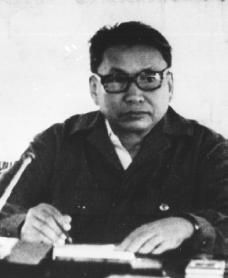CA Enviro Plan Channels Pol Pot
By WAYNE LUSVARDI
Remember Pol Pot, the Cambodian dictator and head of the Khmer Rouge? According to Wikipedia, “During his time in power, Pol Pot imposed a version of agrarian socialism, forcing urban dwellers to relocate to the countryside to work in collective farms and forced labor projects, toward a goal of ‘restarting civilization’ in a ‘Year Zero.’ The combined effects of forced labour, malnutrition, poor medical care and executions resulted in the deaths of approximately 21 percent of the Cambodian population” — 2.5 million people.
Something similar must have been on the minds of the California Council on Science and Technology when it issued its new report, “California’s Energy Future — the View to 2050.” It provides “portraits” of what, under a regime that could be called the Khmer Green, they hope the next state energy system will look like in California’s Year Zero — 2050
About 60 percent of California’s future energy system would be based on shifting the entire state population into electric vehicles. It would eliminate natural gas heating and cooking in all homes, replacing it with electric-powered stoves, water heaters and space heaters with power supplied from green power sources. All buildings in the state would have to be retrofitted or replaced.
Another 20 percent would be based on costly low-tech energy storage in salt domes and air compressor batteries or in speculative technological breakthroughs that do not exist today and that would impose huge costs on electricity consumers.
And a final 20 percent would be based on behavioral changes, such as changing diets to eat less red meat and controlling home thermostats and electric meters to make people wear warm clothing instead.
| California Council on Science and Technology’s Template for Cal Energy Future | |
| Method | Percentage |
| EXISTING TECHNOLOGIES such as retrofitting every building in the State by 2050, switching from petroleum and natural gas for vehicles, space and water heating, cooking, and bus and rail fleets to electric cars, stoves, water heaters, buses, and rail. | 60 percent |
| BREAKTHROUGH TECHNOLOGIES such as artificial photosynthesis, fusion energy, more efficient and sustainable biofuels, hydrogen fuel, more effective carbon capture storage and advanced batteries for both vehicles and grid storage. | 20 percent |
| BEHAVIORAL CHANGES such as changing diet to eat less read meat, carpooling, setting back thermostats and wearing warm or cool clothing, telecommuting. 10 percent will come from lifestyle changes | 20 percent |
.
While most of the nation is rapidly catching on to the emerging revolution in the natural gas fracking (hydraulic fracturing of rock formations) and expanding hydropower, California’s energy future is to be based on a post-modern ideology that seems to want California to trash its entire modern energy system. In its place would be a modernized version of medieval windmills, sophisticated solar-powered magnifying glasses, water wheels, and heat from subterranean geysers, all transmitted to energy conserving consumers via a Rube Goldberg contraption-like energy grid that would be prone to brown outs, black outs, and rapid physical deterioration.
Reading this, you probably say to yourself that this is yet another utopian scheme by a couple of academics that will get a lot of media attention but go nowhere. Nope. This Khmer Green report was funded by the California Energy Commission, the California Air Resources Board, and the S.D. Bechtel Corporation. And it was endorsed by the California Council on Science and Technology. This is apparently the template for California’s future energy system in our Year Zero. And as important as the report is, it hasn’t received much scrutiny in the uncritical newspaper or broadcast media, or even on the Internet. It is apparently being taken for granted that this utopian energy scheme is a fait accompli.
 Deconstructing California’s Energy System
Deconstructing California’s Energy System
The justification for a Pol Pot-style rapid deconstruction of the modern energy system is population growth and the much ballyhooed increase in “greenhouse gases.” According to the Council’s report, state population is expected to double by 2050. To combat the effects of population growth and air pollution, the state must intervene to reduce greenhouse gas emissions to 80 percent below 1990 levels by 2050.
Reducing today’s California pollution by 80 percent would mean the air pollution must drop to about that of 1935, when the population of California was about 6 million. Given an assumed 40-year technological lag time to implement a whole new de-modernized energy system, California must start right now with a massive program to re-engineer everything in society. And as it is presumed only the government — not private markets — can do this, it implies totalitarian control of everything including life styles of Californians. Veganism would replace fracking; draconian regulation would suppress freedom of choice. Pol Pot, call your office.
Criticism of this new energy plan is not another conspiracy theory about Big Government. This is the undeniable template for California’s energy future crafted by California’s ruling cognitive elites.
Khmer Green Ideology
What is driving this mad rush to dismantle the present-day modernized energy system is not science but a countermodern ideology. The California Council on Science and Technology is only being used to put a patina of science on what is ideological.
In California there are ideologies that endorse energy modernization such as shifting to nuclear power, as recently proposed by in the City of Fresno.
And there are ideologies that seek to control, contain, or mitigate air pollution from modern energy plants, such as catalytic converters on cars, natural gas fracking and the expansion of hydropower.
But what the new template of the state’s energy future reflects is a full-blown countermodern ideology that proposes to dismantle many of the state’s power plants and make the electric grid into a precarious system of dubious reliability.
A forerunner of this radical ideology is the State Water Resources Control Board’s order to forbid all coastal power plants, especially nuke plants, from using ocean water for cooling systems. This entails shuttering all the nuke plants in the state, or running costly new water pipelines to the plants or using expensive air-cooling systems. Even if costly fresh water or air cooling systems are installed, this would raise the price of nuclear power so high that costly green power could finally compete with it. The rationale for making nuke plants uncompetitive is not to eliminate pollution, because nuclear technology is clean. The rationale reflects a countermodern ideology.
Instead of a repeat California Gold Rush, the Great California Green Energy Race is about to be kick-started in 2012 to find the highest priced clean technologies for new forms of energy. To do this, markets must be highly regulated to control prices. Markets must be short-circuited because they are mechanisms for producing the lowest-priced goods and services. This is why California is on the cusp of shifting from market Capitalism to state capitalism. California’s political elites want to pick winners and losers in the economy, and want political exactions in return. The apparent cover for doing this is environmentalism.
Unfortunately, many in academia and the media believe that state capitalism is the morally superior system, when there is no effective reduction in air pollution from Green Power. Green Power and Cap and Trade Emission Regulations will not result in replacing dirty imported coal power with clean green power, because wind and solar farms are located in remote areas far away from California’s urban air traps.
Ironically, as postmodern cognitive elites fear the complexity of modern energy technologies, as seen in the recent nuclear plant disaster in Japan, they nonetheless believe the energy grid can be fine tuned to accommodate unpredictable surges of power from wind and solar plants without sacrificing reliability, breakdown, or the rapid deterioration of electric lines that would require their frequent replacement. Alternatively, they believe costly and unproven new battery systems can be integrated along the electric transmission grid to balance out the surges.
Damning Modernization
At the core of this Khmer Green counter-modern ideology we find the quasi-religious idea that modernization is tantamount to damnation. Everything that is wrong with modern society is reflexively tracked back to monopolistic oppression by big energy corporations. In California, this ideology goes back to the influence of the Southern Pacific Railroad and the rise of Progressive politics to counter not merely economic monopolies but modernization itself.
California’s insular turn away from the Tea Party trend of the rest of the nation is not merely political, but a revulsion against capitalism, open markets, and modernity itself. For example, California opposes the Obama Administration’s proposal to open all the Western states up to a new regional green power grid where those states with cheap natural gas or hydropower can ship electricity into the California, which is the region’s largest energy market. California’s future energy template calls for embargoing imported power.
California believes that the solution to its structural state budget deficit is to eliminate reliance on imported sources of energy. With the enactment of air pollution regulations in the 1970’s, California’s only option for reducing air pollution in its urban air traps was to shut down old fossil fuel power plants in urban areas and rely on imported coal power from surrounding states.
But why undertake such a radical transformation of the state’s energy systems as proposed by the Council, when you can continue to import cheap energy from states that are rapidly shifting to the natural gas fracking revolution that would entail no increase in pollution in California? Even liberal Michael Lind, writing in the left-of-center New Republic magazine, says: “Everything You’ve Heard About Fossil Fuels (natural gas fracking) May Be Wrong.” Lind asks:
“Are we living at the beginning of the Age of Fossil Fuels, not its final decades? The very thought goes against everything that politicians and the educated public have been taught to believe in the past generation. According to the conventional wisdom, the U.S. and other industrial nations must undertake a rapid and expensive transition from fossil fuels to renewable energy for three reasons: The imminent depletion of fossil fuels, national security and the danger of global warming. What if the conventional wisdom about the energy future of America and the world has been completely wrong?”
Rejecting Natural Gas
While much of the rest of the nation is turning toward energy policies that favor of natural gas fracking and hydropower, California is determined to reject it on ideological grounds. The problem is that the retail price of electricity is regulated by the California Public Utilities Commission (CPUC), but not fuels or wholesale hydropower, where prices are set by markets. As long as California is dependent on imported natural gas shipped through the Golden Gate Center in Northern California, and the California Energy Hub in Southern California, the state energy system will be exposed to market energy prices. The same goes with cheap hydropower shipped from, say, the Hoover Dam to run the gigantic pumps on the Colorado River Aqueduct for a meager two cents a kilowatt-hour. As long as California’s energy system is open to market prices, Green Power is in jeopardy.
There are a number of hydropower projects for California being pushed by California Rep. Tom McClintock, who is on the powerful House Committee on Natural Resources. The U.S. Bureau of Reclamation has recently released a report, “Hydropower Resource Assessment at Existing Reclamation Facilities” (March 2011), of the increased hydropower potential of existing dams and rivers the United States that would involve only modest impacts on the environment. Seventy potential hydropower project sites were identified, with five of them in California that could produce 15,256 megawatt-hours of electricity. (See table below – the threshold for considering a project as practical is 0.75).
Potential California Hydropower Projects
| Facility Name | Installed Capacity (kW) | Annual Production (mWh) | Benefit-Cost Ratio |
| John Franchi Dam – Fresno River | 469.1 | 863 | 0.9 +/- |
| Boca Dam – Little Truckee River | 1,184 | 4,370 | 1.68 |
| Prosser Creek Dam – near Truckee | 872 | 3,819 | 1.98 |
| Putah Diversion Dam – Green River in Lake County | 363 | 1,924 | 1.16 |
| Casitas Dam – Coyote Creek, Ventura Co. | 1,042 | 3,280 | 1.57 |
| Total: | 3,930 | 15,256 | 1.5 average |
.
Development of added hydropower at the John Franchi Dam on the Fresno River, for example, would take only $3.6 million with $108,000 in yearly operations and management costs. While this may be drop in the bucket of California’s total energy needs, many of the other hydropower project sites in the Western region identified by the Bureau of Reclamation could end up shipping additional electrons to California through the regional power grid. It is the impact that cheap hydropower would have on all wholesale energy prices that is critical.
But California’s Green Power Law — AB 32 — forbids hydropower from qualifying as “green,” even though it emits no air pollution. The reasons for this are more ideological and political than economic or environmental.
Those who would not for a moment believe whatever the U.S. Secretary of Defense or the head of Occidental Petroleum said would take whatever the California Council on Science and Technology says as gospel truth. The Energy Future report is not a rational response to a body of vetted evidence. It is supported by a belief system and an economic ideology — the Khmer Green ideology. Government in California does not always follow what is in the state’s rational interest. It does what is consistent with other things it believes in.
There are powerful vested interests for the continued modernization of the energy policy via nuclear power. There are similar vested interests, albeit diminishing, for centrist energy policies that would entail continued modernization of the energy system and grid but with mitigating measures such as fracking and hydropower. And there are nearly insurmountable vested interests for scrapping modernized energy policy and the energy system in favor of highly risky and costly countermodern energy policies.
Vested Ideology
There are powerful interests, money, political power and status at stake on all sides. Yet right now it is not vested interests, but the vested Khmer Green ideology of countermodernization that is driving future energy policy in California with some possible influence being made by the federal government for fracking and hydropower.
But fracking is being demonized by the Environmental Left to render it illegitimate. The media have already spread the urban myth of fire coming out of water faucets in the vicinity of fracking operations. And California’s Green Power Law has already made hydropower legally illegitimate. Energy in California is not a policy for rational problem solving but ideological warfare.
It is the power of ideology, not necessarily economic interests, that will likely determine California’s future energy policies. Here, a vigorous case needs to be made for markets and moderated modernization of the energy system, including relatively less-polluting natural gas fracking and clean and cheap hydropower.
There is need in California for a middle ground energy policy that is somewhere between the radical Year Zero utopian vision of the California Council on Science and Technology and the impacts of a nonexistent bogeyman of unregulated energy markets.
Without competition from cheaper natural gas and hydropower to contain prices, the price of Green Power will likely go through the roof. This was demonstrated during the California Energy Crisis of 2000-01, when cheap imported hydropower from the Northwest was unavailable due to a drought, and the price of natural gas spiked when Caltrans ordered a shutdown an interstate natural gas line, purportedly to do freeway repairs right in the middle of the crisis. At the same time, price controls on retail electricity imposed by California’s Legislature — on top of everything else — created a “perfect storm” for an energy price “bubble” in wholesale energy markets that was erroneously blamed on Enron to avoid the political consequences. The experience of the California Energy Crisis of 2000-01 teaches that the Law of Unintended Consequences is much more likely to raise its ugly head without open markets than with them.
Postmodern policies are a way to cope and mitigate the impacts of modern energy technologies. But they are not any way to “run a railroad” or an economy. California’s cognitive elites don’t seem to understand the difference to the detriment of it structural state budget deficit and high unemployment rate.
California needs an ideologically centrist and open market energy policy, not a radical, Pol Pot-inspired countermodern energy plan for the future based on an ideology that can only succeed by closing off markets and the regional grid to California. As long as Gov. Jerry “Moonbeam” Brown is in office, like Cambodia under Pol Pot and the Khmer Rouge, California may be poised to suffer another socialist assault on reality.
Related Articles
Calif. refuses to generate own electricity
Aug. 3, 2012 By Joseph Perkins George Santayana famously warned, “Those who cannot remember the past are condemned to repeat
FTB spends 5 years, fails to collect $392
California’s Franchise Tax Board spent thousands of dollars over five years in the futile pursuit of a Redondo Beach
Politically connected HealthCare Partners sidestepped licensing for 10 years
Part One of a series May 3, 2013 By Katy Grimes One of the original pioneers of the Obamacare





